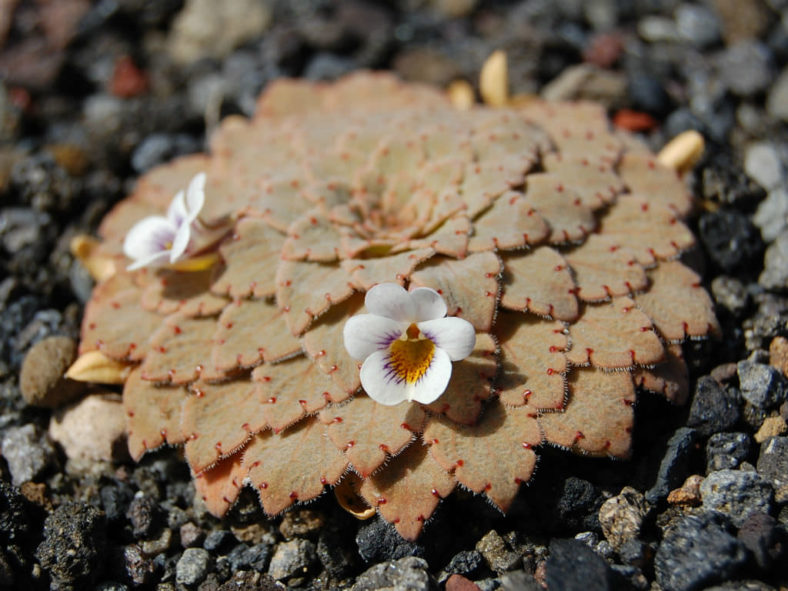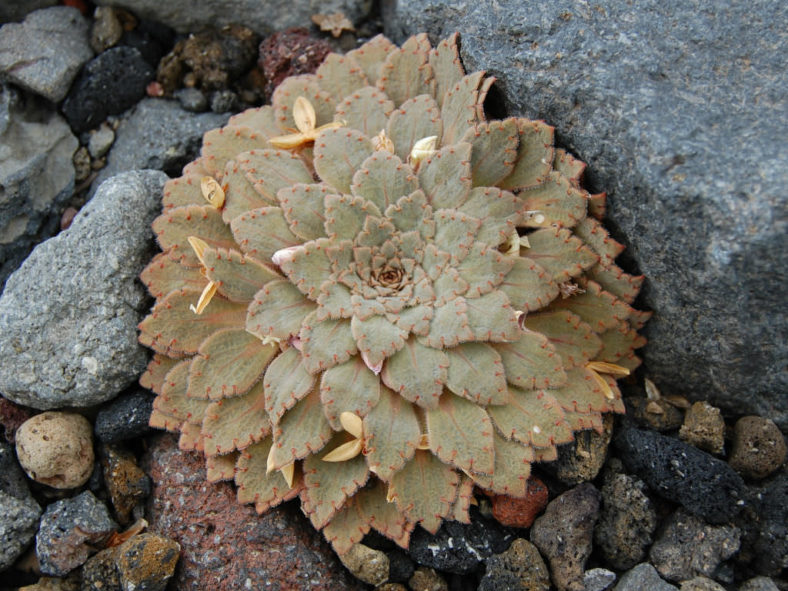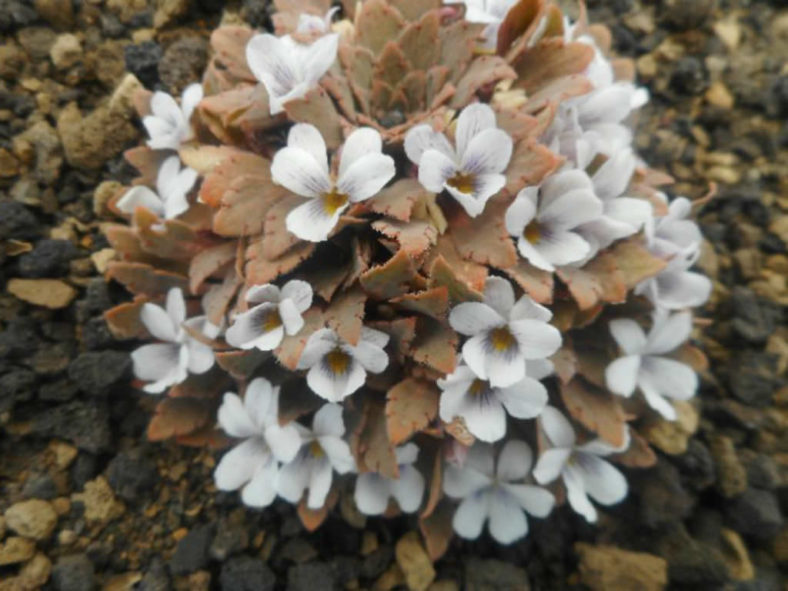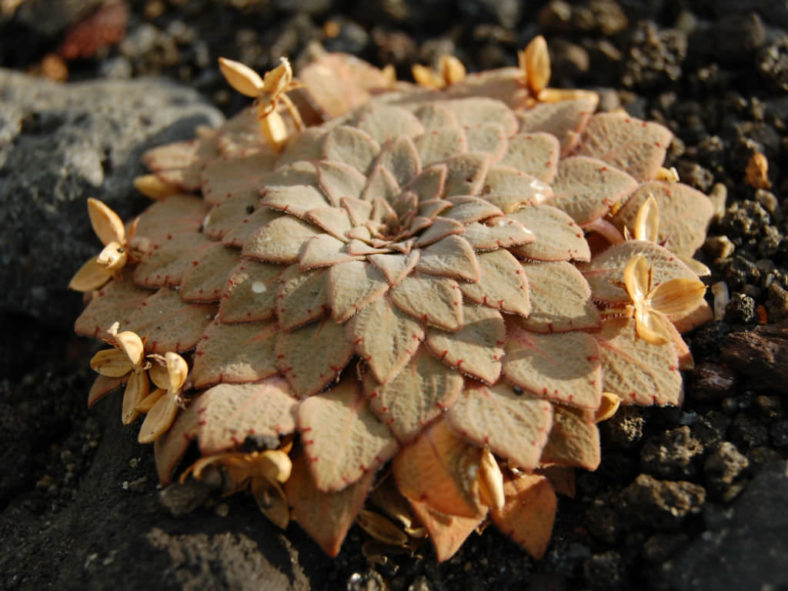Scientific Name
Viola farkasiana J.M.Watson & A.R.Flores
Scientific Classification
Family: Violaceae
Subfamily: Violoideae
Tribe: Violeae
Genus: Viola
Etymology
The specific epithet "farkasiana (far-ka-see-AH-nuh)" honors Leonardo Farkas (b. 1969), a Chilean businessman, philanthropist, and sometimes professional musical performer.
Origin
Viola farkasiana is native to Chile (Biobío) and Argentina (Neuquén).
Description
Viola farkasiana is a perennial plant that forms small, usually solitary rosettes of reddish-brown (rarely green), semi-succulent leaves with crenate translucent margins fringed with short hairs. The rosettes can grow up to 1.2 inches (3 cm) tall and 3.2 inches (8 cm) in diameter.
The flowers are white or lilac with a yellow base, speckled red if petals are white, or black if lilac. They can reach up to 0.4 inches (1 cm) in diameter and appear in summer, forming a broken circle within the outer circumference of the rosette.

How to Grow and Care for Viola farkasiana
Rosulate Violas have a reputation for being difficult to keep alive. Therefore, cold conditions, soil containing adequate nutrients, and as much light as possible are essential.
Soil: They grow in relatively bare, loose soils, often volcanic in origin.
Hardiness: Viola farkasiana can withstand temperatures as low as 0 to 50 °F (-17.8 to 10 °C), USDA hardiness zones 7a to 11b.
Propagation: Rosulate Violas are grown only from seed and with some patience.
The main problem with these plants is etiolation, caused by a lack of light, which results in the elongation of the compact rosettes. However, it is known that some of the seedlings will quickly etiolate while others will not. So, there is some scope in selecting Rosulate Violas that are more likely to grow satisfactorily in cultivation.
Learn more at How to Grow and Care for Rosulate Violas.
Toxicity of Viola farkasiana
Violas are nontoxic for humans and pets. Both the flowers and leaves are edible, fresh, cooked, or dried.
Links
- Back to genus Viola
- Succupedia: Browse succulents by Scientific Name, Common Name, Genus, Family, USDA Hardiness Zone, Origin, or cacti by Genus
Photo Gallery
Click on a photo to see a larger version.


